10 Key Takeaways From HP Executive Forum 2018

The Future Of HP
HP Inc. is on a mission to prove the naysayers wrong yet again. The company already has proven it can grow in two sluggish markets, PC and print. The challenge now is to prove that it can keep growing -- and make its big bets, in areas such as 3-D printing and commercial virtual reality, into big businesses. During HP's Executive Forum 2018 conference in Las Vegas this week, executives including CEO Dion Weisler (pictured) said that the company sees ample opportunity to keep up the pace, but can't pull it off without channel partners. HP has "generated an enormous amount of momentum, and momentum in business is incredibly important," Weisler told 400 partners gathered at the conference. "Let's leverage the momentum that we have to continue to propel us forward."
How exactly does HP plan to keep up the momentum? In the following slides, we've rounded up 10 key takeaways on where HP is looking to go next with its products and partners.
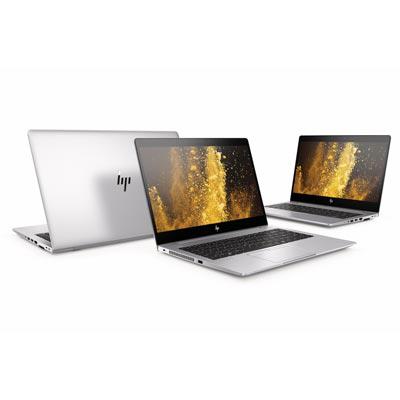
Device-As-A-Service Is Gaining Steam
HP has been ramping up its push to move away from transactional sales of PCs, and toward a subscription- and service-oriented approach the company calls Device-as-a-Service. The efforts have been paying off: HP executives reported during Executive Forum 2018 that the sales pipeline for Device-as-a-Service has now grown to $3.6 billion. Device-as-a-Service (or DaaS) is particularly taking hold thanks to its predictive analytics capabilities, which can improve uptime and reduce IT burdens by proactively uncovering device issues, according to Grad Rosenbaum, vice president and general manager for the Americas managed services business at HP. DaaS is about having a "trusted long-term contractual relationship with someone who is more intimately involved with managing the environment holistically, in a more sticky way," rather than being a commodity supplier, Rosenbaum told CRN in an interview. While there has been an education process needed since DaaS is such a new area, the concept is "starting to click in for both our customers and for our partners," Rosenbaum said.
And DaaS is "even more" applicable to small businesses than to large ones, Weisler told CRN. "A larger organization has an IT department," Weisler said. "But a smaller company doesn't actually want the IT department. ... The only reason they've had to build it in the past is that no one had the [service] offering. If you create the offering, they're going to come."
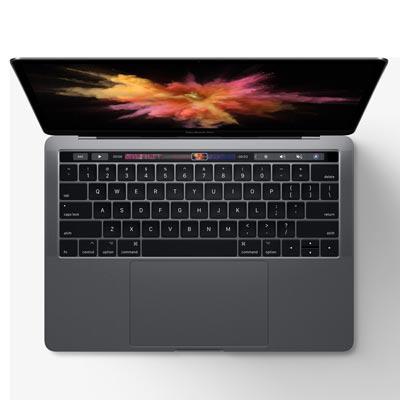
Apple's Inclusion In DaaS Is Opening Up New Opportunities
In February, HP announced an expansion of its Device-as-a-Service offering to include Apple devices. While the move meant turning HP into a reseller for one of its major competitors, the result has been to open up lots of new DaaS opportunities for HP and partners, since they can now manage and supply devices regardless of operating system, Rosenbaum said. The move was crucial in landing a recent DaaS deal for HP and partner Accenture with a new customer that needed existing Apple devices managed in its corporate fleet, Rosenbaum said. "We're going to manage all of their existing desktops, laptops and Apple devices, and we'll then be involved in the refresh of those devices" as part of that deal, he said.
"The end customer, whether we like it or not, has multiple operating systems in their environment," Weisler added. "If we really want to be in the Everything-as-a-Service business, then we have to be able to support those multiple end-user environments. ... I think that you can compete [with Apple] but also be a great partner."

The Contractual Model Still Presents Hurdles For Some Partners
HP executives say there is still plenty of work to be done on transitioning partners to the Device-as-a-Service model. "There are a lot of hurdles," said Stephanie Dismore, vice president and general manager for Americas channels at HP. "Everything changes. Your billing changes, your sales skills change -- if not your salespeople. Your balance sheet changes, your supply chain changes." So while there is increased demand for DaaS, "we're not moving as fast as we'd like to, because it's such a shift," Dismore said.
"This is a partner landscape that has learned to sell with us in a transactional model. Now it is a contractual model. And they need to evolve," said Christoph Schell (pictured), president for the Americas business at HP. "They need to learn how to deal with the data that they get back, they need to have not only sales coverage but also service coverage."
HP has been running regular workshops with channel partners about DaaS, adjusting the program based on partner feedback and offering access to DaaS specialists within HP who can work closely with partners on specific opportunities, Dismore said. "The key for us is to make it seamless for the partner. And we're still on that journey to get there," she said.

3-D Print Will Be A Central Part Of HP's Future
In February, HP revealed its next strategy to bringing 3-D printing into the commercial mainstream by unveiling four new Jet Fusion models. The 3-D printers feature the same technology of the original models, but with a smaller footprint and lower cost to reach a broader set of customers. As HP looks out five to 10 years, 3-D printing will be central to continuing the company's growth, HP executives said. Even within the next five years, "3-D printing will represent a much more material portion of our revenue and operating profit," Weisler told CRN. "I don't think the market really yet understands the power of 3-D print, the way we see it. And that's fair enough because there's not yet enough proof points out there, and not enough momentum yet. We've only been in the business for about 18 months. But I think it's an underappreciated, massively disruptive technology that has an enormous amount of headroom."
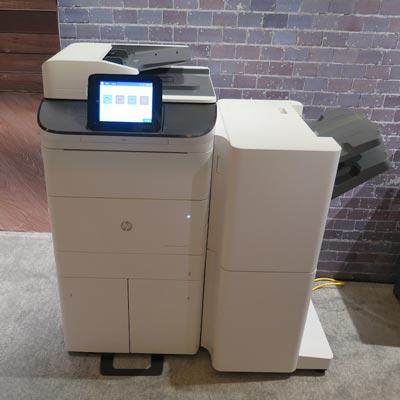
No Slowdown In Commercial And Consumer Print Device Rollouts
As HP looks beyond its core markets of PCs and A4 printers, the company is counting on new areas of print to help continue driving growth. And HP is releasing new printer devices at a steady clip in both commercial and consumer markets. Along with bringing A3 multifunction printers under the HP umbrella through the acquisition of Samsung's printer business, HP has been launching its own A3 models, including models using HP's PageWide technology. This week, HP unveiled a new PageWide A3 model with external finishing capabilities that is available both for transactional and contractual deals. HP is also excelling at providing consistency in its platform between A3 and A4, said Skip Tappen, CEO at NWN, a Waltham, Mass.-based partner of HP. "I think for enterprise customers they will start to see the value of a consistent platform," Tappen said in an email to CRN.
Meanwhile, during the Executive Forum, HP also teased new consumer printers expected to launch later this year.
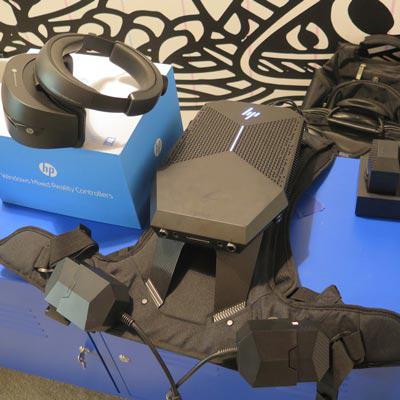
HP Is Bullish On Commercial VR
Another key future area for HP is virtual reality for commercial customers (which isn't an area too many vendors are latching onto just yet). Commercial VR has "tremendous promise," Schell said during Executive Forum. "At HP, we believe the commercial opportunity for VR outweighs the consumer opportunity." Examples of commercial applications for virtual reality include simulations of surgeries for doctors, battlefield training simulations for the armed forces, and collaboration with remote employees, Schell said. HP's virtual reality products include the HP Z VR Backpack, which enables users to experience VR without dealing with wiring issues.
"Today it's probably not representing a big revenue stream, but we believe with increased development, use cases, content development, it's going to be a huge use case," said Kobi Elbaz, vice president and general manager for HP's Americas personal systems business. "It's a big strategy for us in the future."
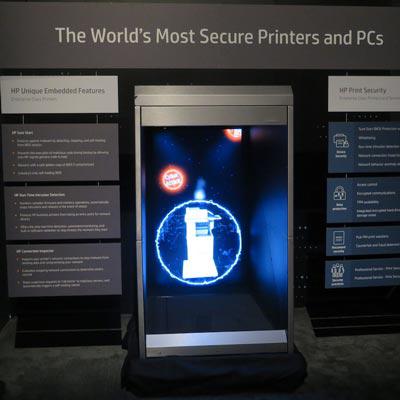
HP Is Winning Deals By Selling Security Rather Than Endpoints
HP has made its security differentiators a major focus in selling both PCs and printers -- with technologies such as the Sure Start self-healing BIOS and Sure View privacy screen -- and the message is resonating with partners and customers, executives said. In fact, many partners are finding success by leading their pitch to customers with security instead of talking about the endpoints, according to HP executives. A winning strategy for partners is to tell customers, "Let's not talk about personal systems or print, let's talk about security. Let's talk about how 70 percent of breaches happen on an endpoint device, and how can HP help solve that problem for you," Dismore said.
That approach is particularly a "door-opener for C suite discussions," Schell said. Most partners will not have the chance to "talk to a CEO about PCs. But they will get to talk to a CEO about cybersecurity strategy," he said.
"These threats, if you look at some of the big things that've happened, are things that are talked about in the boardroom. So CEOs really care," Weisler said. "I think we're well ahead of our competitors [on security]. We do it with a common thread across print and PC. And our competitors can't do that, because they just don't offer both."
Tappen, of NWN, agreed that HP's security message is resonating in the market. "They have been talking about it for a while, but it feels like it is starting to get traction," Tappen said.
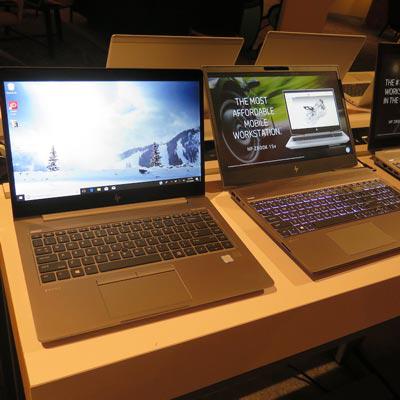
Execs Say That Partners Are Switching To HP
HP's growth in both revenue and market share, at a time when the PC and printer markets are sluggish overall, are clear signals that more channel partners are favoring HP over competitors in those markets, executives said. "Given that we have 87 percent of our business through the channel, and our results demonstrate that we're growing double digits on double digits, the only mathematical conclusion that you can come to is that" partners are switching, Weisler said. "I think mathematically the numbers speak for themselves. And we are a dependable channel, and I wouldn't say that is true necessarily for all of our competitors."
Working with the channel is "all about trust and loyalty," Dismore said. "I feel like the feedback that I'm getting with those partners is, 'You're not perfect, but we trust you, we love the culture, we love the innovation, problems get addressed. And we can't say that for everyone.' I don't want to speak negatively of my competition -- I believe iron sharpens iron, so game on -- but I will tell you that our partnership with our channel has never been stronger."
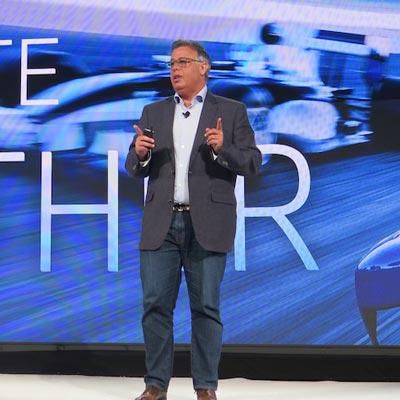
The Channel Will Only Gain A Larger Role In Sales
Weisler said he sees channel partners gaining an even greater role in driving HP sales in the future. "I'm personally committed, as I have been since I joined this company, to accelerating channel growth," he said during Executive Forum. "We're doing 87 percent of our business with the channel, and I only see that growing in the future, not contracting."
In an interview with CRN, Weisler added that, "if you accept that the market is going to move more to a full managed services environment, [then] that network of partners that are able to take what we have, and then take the best-of-breeds from other vendors and stitch it all together, will naturally become more important. ... If you accept all that logic, it will only grow -- not force-fed, but naturally."

HP Is Making New Efforts To Help Partners Move To Higher Tiers
Building on changes in fiscal 2017 to provide access to many Partner First programs for partners with in the Silver and above tiers, HP is now rolling out a new initiative to help more partners reach higher tiers, Dismore (pictured) said. "We're giving incentives for people to move up, to become Silver or become Gold. Our goal is to try and invest more with partners that want to invest with us, and at the same time provide a program for those partners to move up," she said. "If partners want to invest with us and move up the stack, we're all in. If you're not even Silver and you want to be Silver, we're willing to work with you. It's a partnership and an engagement where the more you give, the more we give."